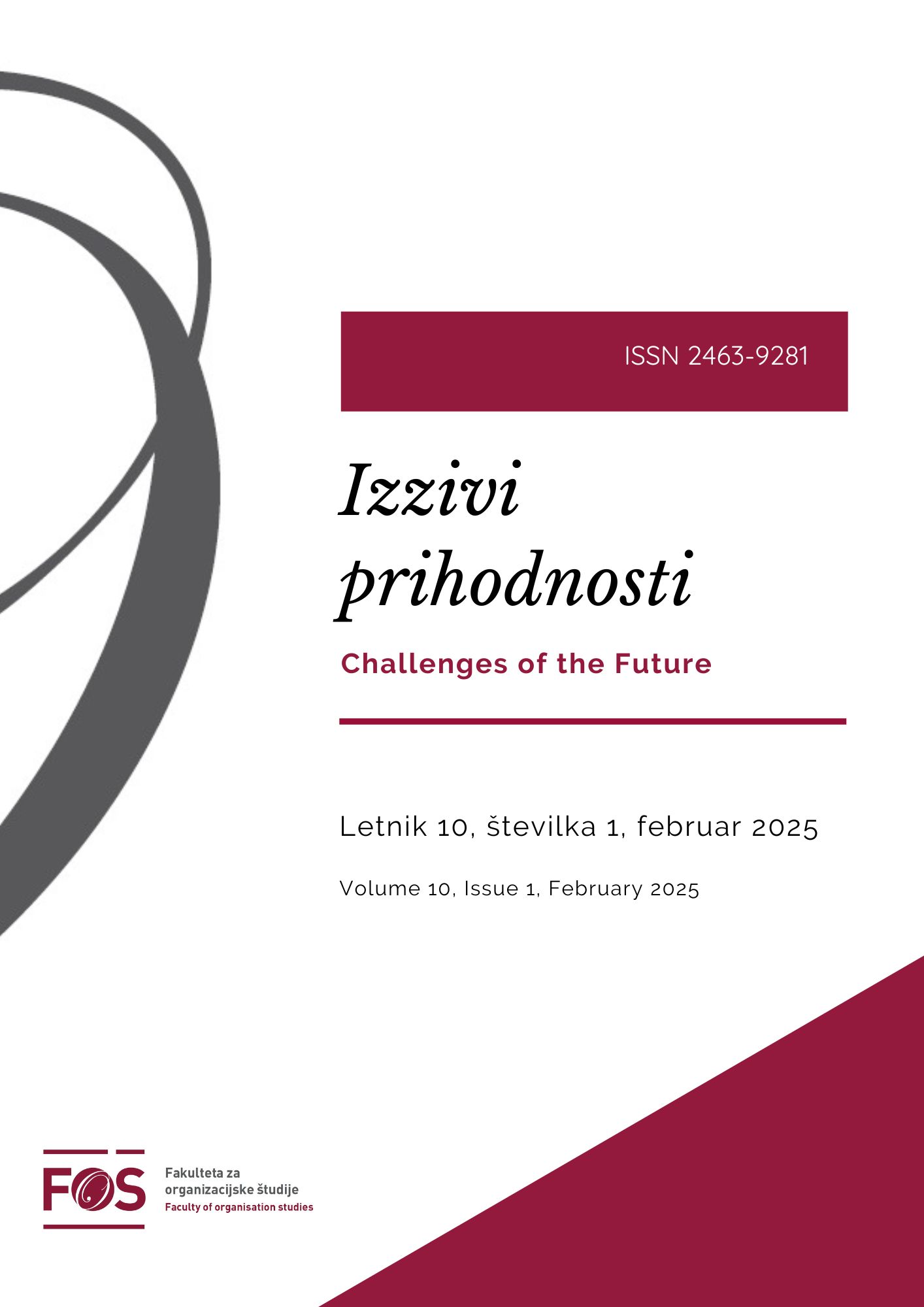The Paradigm of the Iron Triangle
DOI:
https://doi.org/10.37886/ip.2025.002Keywords:
project management , project triangle, triple constraint, iron triangle, agile triangle, project performance, success factorsAbstract
Background and Originality: The project triangle, also named as the triple constraint, iron triangle, golden triangle, and agile triangle, is a central concept in project management research and practice that represents the relationship between key performance measures. However, there is disagreement about which criteria should be represented at the vertices of this triangle. The purpose of this paper is to explore which concepts are part of the project triangle and how these concepts have changed over time.
Our purpose is to conduct a systematic review of scientific articles dealing with the topic of the project triangle and its elements (time, cost and scope). We want to demonstrate that there is a theoretical gap in the classical theory of the project triangle and that the elements of the project triangle are ultimately reflected in successful project management.
Addressing this topic will contribute to eliminating or at least reducing the perceived theoretical research gap, or confusion regarding the positioning of the elements of the project triangle and the connection of these elements to the success of projects.
Method: A systematic review of the scientific literature will be conducted using publicly available databases, namely "iron triangle", "triple constraint”, “project performance" and "success factors" as search terms. Scientific articles and doctoral/master's theses were searched in the databases Academia.edu, ProQuest, ScienceDirect, Elsevier/Scopus and Google Scholar. We excluded literature that does not directly relate to the field of research.
Results: We found out that there is a gap in the basic theory of the project triangle or to be more exact confusion about the positioning of quality and scope of the project in the project triangle. We therefore want to reduce the gap and confirm the thesis that quality is not one of the 3 elements of the project triangle, but is indirectly defined through the elements of the project triangle (time, cost, scope). The authors of the research carried out so far listed the elements of the project triangle and defined success criteria of the projects by group, among which the individual elements of the project triangle were classified. We expect to confirm the hypothesis that there is a connection between the elements of the project triangle and success of projects.
Society: Our research will confirm the dimensions of the project triangle concept and show the influence of its elements on the most common groups of success criteria, with the help of which companies measure the success of projects. This research will show which elements of the project triangle and criteria are given greater importance by the scientific literature, which represents a starting point for optimization in the field of managing various types of projects.
Understanding the concept of the project triangle and its role in the creation of success criteria will help the various stakeholders involved in project management to be more motivated to monitor the elements of the project triangle and that this will allow them to manage more effectively, which in turn also affects their commitment in performing project duties.
Limitations / further research: The topic under discussion has been well studied for the past 20 years, although it has undergone a great deal of theoretical transformation. At the same time, we note that the theoretical treatment is not followed by scientific research, as it mainly covers the field of methodology, factors and strategies for the success of project management in the construction industry or on large investment projects, in the field of IT and healthcare.
Proposals for further research will be made in order to conduct research on this topic in other industries and on other types of projects and on several different stakeholders and/or stakeholder groups involved in project management.
References
Adejoh, A. A., Asebiomo, M. M., Ogunbode, E. B., Oyewobi, L. O., Sani, M. A., Isa, R. B. & Jimoh, R. A. (2023). Influence of Contractor Selection Criteria on Critical Success Factors of Public Project Delivery in Abuja. Environmental Technology and Science Journal, 13(2), 86-98. doi: 10.4314/etsj.v13i2.10
Ajibike, W. A., Adeleke, A. Q., Muuka, G. N., Bamgbade, J. A., Darun, M. R. & Moshood, T. D. (2022). Impacts of Oil and Gas Internal Risk Factors on Project Success: Moderating Role of Government Support. Construction Economics and Building, 22(1), 47-69. doi: 10.5130/AJCEB.v22i1.7842
Alade, T. A., Bukoye, O. T, Roehrich, J. K. & Edelenbos, J. (2022). Cross-national collaboration in strategic transport projects: The impact on benefits realization. International Journal of Project Management, 40(4), 411-425. doi: 10.1016/j.ijproman.2022.03.009
Al Mokhtar, M. A. S. & Mazen, M. F. (2021). The Impact of Transformational Leadership Factors on Project Progress and which Factor has Significant Influence and Great Contribution towards Project Success. Webology, 18(4), 1389-1412. doi: 10.14704/WEB/V18SI04/WEB18205
Amora, V. C. M. & Juanzon, J. B. P. (2022). A Framework of Critical Success Factors and Success Criteria for Structural Works of a Mixed-Use Building Construction Project. Civil Engineering and Architecture, 10(1), 267-279. doi: 10.13189/cea.2022.100123
Bond, S. S. (2022). International Development Project Strategies to reduce the Negative Impact of Triple Constraints (Master’s dissertation). Walden University, USA
Borsuk, B. J. (2022). Manufacturing Execution Systems Project Success (Doctoral dissertation). Faculty of Saint Leo University, USA
Byers, S. (2022). Large Construction Projects – Measuring Success Through Different Stakeholders’s Eyes (Doctoral dissertation). University of Western Australia, Australia
Bukoye, O. T., Ejohwomu, O., Roehrich, J. & Too, J. (2022). Using nudges to realize project performance management. International Journal of Project Management, 40(8), 886-905. doi: 10.1016/j.ijproman.2022.10.003
Bursaw, C. J. (2022). Effects of Traditional and Agile Project Management: Analysis for Project Succes in Noniformation Technology Environments (Doctoral dissertation). Faculty of Saint Leo University, USA
Cardella, C. (2022). Project Termination Quality and its Influence on Organizational Learning and Project Management Success (Doctoral dissertation). University of North Carolina at Charlotte, USA
Clark, J. M. (2021). The Extent of Project Management Competencies and Project Complexity on Project Success: a Correlation Study (Doctoral dissertation). Capella University, School of Business and Technology, USA
Egboga, I. & Cross, O. D. (2022). How relevant is the iron triangle as a measure of construction project performance. World Journal of Management and Business Studies, 2(1), 1-14.
Essien, I. O. (2021). Modelling Project Complexity for Leadership Decision-making and Success in the Building Construction Industry in Lagos, Nigeria (Doctoral dissertation). Oxford Brookes University. Lagos, Nigeria.
Girma, B. H. (2021). The Practice of Monitoring and Evaluation in Ethiopian Road Projects: The Case of Federal Road Projects (Master’s dissertation). St. Mary’s University, Addis Ababa, Ethiopia
Highsmith, J. (2009). Agile Project Management: Creating Innovative Products (2nd ed.). Pearson Education.
How Agile Keeps Projects on Track, On Time, On Budget. Vertical motion. Retrieved from https://www.verticalmotion.ca/how-agile-keeps-projects-on-track-on-time-on-budget/
Hussain, A., Jamil, M., Farooq, M. U., Asim, M., Rafique, M. Z. & Pruncu, C. I. (2021). Project managers’ personality and project success: Moderating role of external environmental factors. Sustainability (Switzerland), 13(16), art.9477, 1-22. doi: 10.3390/su13169477
Hussain, D. A., Khan, G. A., Khan, D. J. A. & Khan, M. I. (2022). Project Success Factors and Project Management: Empirical Evidence from Pakistan. International Journal of Business and Management Sciences, 3(2), 67-79. Retrieved from https://www.ijbms.org/index.php/ijbms/article/view/219
Ika, L. A. & Pinto, J. K. (2022). The “re-meaning” of project success: Updating and recalibrating for a modern project management. International Journal of Project Management, 40(7), 835-848. doi: 10.1016/j.ijproman.2022.08.001
Imran, M., Hye, A. K. M., Urbanski, M. & Dacko-Pikiewicz, Z. (2022). Assessment of Risk Factors and Project Success in Construction Industry. Transformations in Business & Economics, 21(2B(56B)), 986-1000. Retrieved from https://www.researchgate.net/publication/366901748_Assessment_of_Risk_Factors_and_Project_Success_in_Construction_Industry
Jayyousi, A. A. (2021). A Critical Examination of the Relationship Between Project Management Leadership Style and Project Success in the United Arab Emirates Construction Industry (Master’s dissertation). California Southern University, California, USA
Kerzner, H. (2023). Project Management Metrics, KPIs, and Dashboards. A Guide to Measuring and Monitoring Project Performance (4th ed.). Hoboken, New Jersey: John Wiley&Sons.
Kumar, V., Pandey, A. & Singh, R. (2023). Project success and critical success factors of construction projects: Project practitioners' perspectives. Organization, Technology and Management in Construction, 15(1), 1-22. doi: 10.2478/otmcj-2023-0001
Lama, N. D., Kian, M. W. & Ojha, S. K. (2022). Institutional Competence Factors Affecting Multiple Project Management Success; The Case of Nepalese Construction Industry. International Journal of Academic Research in Business and Social Sciences, 12(5), 1882-1906. doi: 10.6007/IJARBSS/v12-i5/13897
Locatelli, G., Paravano, A., Terenzi, M. & Trucco, P. (2023). Yes, construction cost, time and scope are important, but there is more: a new action plan for infrastructure success. Management Decision, 61(13), 413-424. doi: 10.1108/MD-04-2022-0516
Madsen, S. (2013, December 3). Is the iron triangle outdated? Retrieved from
https://www.susannemadsen.co.uk/blog/the-iron-triangle-and-the-tripleconstraintsare-outdated
Mellado, F., Lou, E. C. W. & Becerra, C. L. C. (2020). Synthesising performance in the construction industry: An analysis of performance indicators to promote project improvement. Engineering, Construction and Architectural Management, 27(2), 579-608. doi: 10.1108/ECAM-09-2018-0419
Moreno-Monsalve, N., Delgado-Ortiz, M., Rueda-Varón, M. & Fajardo-Moreno, W. S. (2023). Sustainable Development and Value Creation, an Approach from the Perspective of Project Management. Sustainability (Switzerland), 15(1), art. 472, 1-15. doi: 10.3390/su15010472
Page, M. J, McKenzie, J. E., Bossuyt, P. M., Boutron, I., Hoffmann, T. C., Mulrow, C. D., … Moher, D. (2021). The PRISMA 2020 statement: an updated guideline for reporting systematic reviews. BMJ, 372(71). doi: 10.1136/bmj.n71
Pollack, J., Helm, J. & Adler, D. (2018). What is the Iron Triangle, and how has it changed? International Journal of Managing Projects in Business, 11(4), 527-547. doi: 10.1108/IJMPB-09-2017-0107
Salazar, L. (2018, September 13). From iron triangle to agile triangle (extended). Retrieved from https://www.linkedin.com/pulse/from-iron-triangle-agile-extended-luis-antonio-salazar-caraballo/?trackingId=eHMns0r0Sgafm4EpYO3oKw%3D%3D
Samset, K. F. & Volden, G. H. (2016a). Front-end edition of projects: Ten paradoxes and some
reflections regarding project management and project governance. International Journal of
Project Management, 34(2), 297-313. doi: 10.1016/j.ijproman.2015.01.014
Samset, K. F. & Volden, G. H. (2016b). Front-end Definition of Major Public Projects. Theoretical insights and conflicting practices. A selection of findings from studies conducted by the Concept Research Program. Norwegian University of Science and Technology, Trondheim. Retrieved from http://hdl.handle.net/11250/2437547
Shrestha, B. K. (2021). Relationship Between Standardization Critical Success Factors (CSFs) and Project Performance (Doctoral dissertation). University of Nevada, Las Vegas, USA
Sidlayiya, T. H. (2022). The Impact of Project Control in Project Succes in the Events Industry in Cape Town (Master’s dissertation). Cape Peninsula University of Technology, Cape Town, SAR
Team Asana. (2024, February 15). What is the project management triangle and how can it help your team? Retrieved from https://asana.com/resources/project-management-triangle
Varajão, J., Lourenço, J. C. & Gomes, J. (2022). Models and methods for information systems projects success evaluation – A review and directions for research. Heliyon, 8(12), e11977. doi: 10.1016/j.heliyon.2022.e11977
Volden, G. H. & Welde, M. (2022). Public project success? Measuring the nuances of success through ex post evaluation. International Journal of Project Management, 40(6), 703-714. doi: 10.1016/j.ijproman.2022.06.006
Vrchota, J., Řehoř, P., Mařiková, M. & Pech, M. (2021). Critical Success Factors of the Project Management in Relation to Industry 4.0 for Sustainability of Projects. Sustainability 2021, 13(1):281. doi: 10.3390/su13010281
Yedvav, H., Kordova, S. & Fridkin, S. (2022). Offset Obligation in Defense Projects: Schedule, Budget, and Performance Implications. Sustainability (Switzerland), 14(18), art. 11184, 1-21. doi: 10.3390/su141811184
Young, M. (2016). Private vs. public healthcare in South Africa (Bachelor's thesis). Western Michigan University, USA
Additional Files
Published
How to Cite
Issue
Section
License
Copyright (c) 2025 Mateja Burgar Makovec

This work is licensed under a Creative Commons Attribution-ShareAlike 4.0 International License.
![]()








